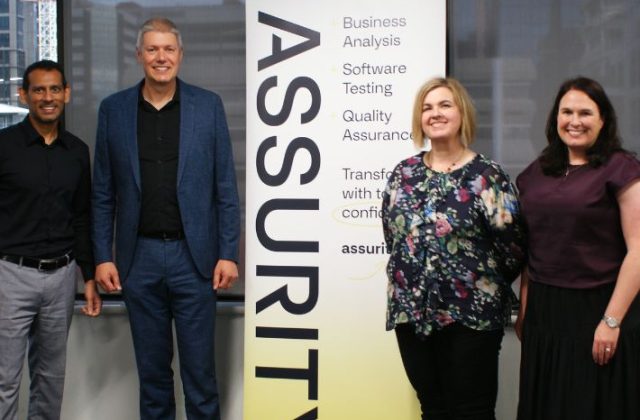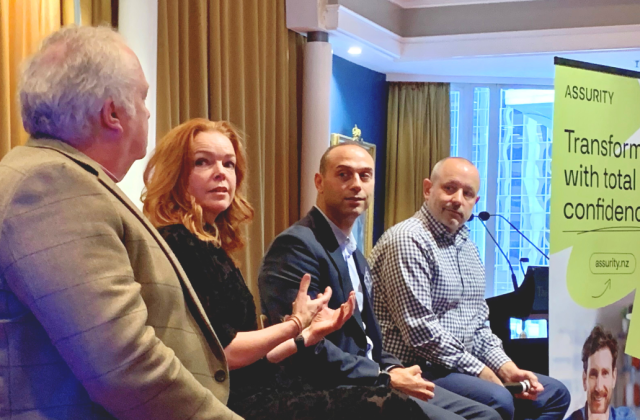Date: 27 September 2020
The advantage offered through new digital business models is recognised as so substantial that, for many organisations, the greatest risk is failing to change fast enough – or to only change the technology and not the business itself.
But with scale and complexity, the challenge is equivalent to rebuilding a plane while in flight. Customers expect an increasing quality of service in the digital world and a business transformation programme cannot risk impacting that customer experience at any stage. In other words, there’s a lot at stake.
Recently, I’ve engaged with several business leaders who have successfully managed their digital transformations in ‘at scale’ organisations.
Along with culture and organisational change, these transformations include complete re-platforming of core business systems which serve thousands – and even hundreds of thousands of customers. The projects are staggering in scale, with one at Inland Revenue described as “probably the biggest transformation in the Southern Hemisphere”. Spanning seven years and a billion-dollar investment, it certainly stakes a claim!
Here’s the good news. There are commonalities with successful transformations at scale, proving that it is indeed quite possible to achieve fundamental change and grow the customer’s experience at every stage along the journey. And the real key to it all lies in the central role those customers play in shaping the change itself – around their needs.
Some context
Digital transformation entails a profound organisational change spanning vision, leadership, culture and approaches to investment. Technology will always have a key role in enabling that change but is not the reason for the change itself. A clear pattern can be seen where transformation success comes from having a balanced view of technology and its role.
The stories about less-than-successful, large-scale business change involving the replacement of core ERP business systems are many and often catalogued in the press. Evidence that change at scale whilst operating the business – with no disruption – is always a significant undertaking and one which has board and investor-level attention in all the wrong ways if it fails to deliver.
Back office processes and systems are however just one part of the technical picture that a successful organisational transformation will need to address.
Digital organisations are highly connected to their partners and the ecosystem within which they operate. This also creates real challenges in terms of how to industrialise the organisation’s approach to digital partnership, APIs and the ever-critical cyber security stance of the business.
It also involves moving organisational thinking from an ‘inside-out’ delivery of services to the market mindset, to a more digital age ‘outside-in’ view of what the market and its customers want from the business.
The point is that with change at scale comes risk at scale. And just like the notoriously costly ERP implementations, change at scale also comes with substantial cost.
If value isn’t delivered which exceeds the cost, and if the change is unsuccessful, your plane in flight isn’t just at risk of not making its destination, the airline itself may be jeopardised.
Start with strategy
I’ve mentioned and referenced failed ERP implementations in highlighting risk, and often, failed projects provide pointed examples of what not to do. One customer I spoke with noted that the most obvious difference between a failed initiative and a successful one starts right at the outset with strategy and vision.
Another customer, this time at the West Coast and Canterbury DHB which has digitised its Patient Administration System, HR systems and moved to a hybrid cloud environment, highlighted the importance of understanding the principle of business process improvement rather than falling back on ‘this is how we’ve always done it in the past’.
Both stressed the necessity for cultural alignment with the partners who play crucial roles in the delivery of change – whether those partners are software vendors, implementation specialists and, indeed, customers.
There’s also a clear necessity for building internal capacity and capability; this is a powerful strategy not only for managing the cost of change (because you won’t have to continually rush off to consultants for support), but also a proven method for supporting future change. Which is, of course, inevitable.
Putting customers at the centre of change
Back in the days of waterfall delivery, aside from consultation at the very beginning, customers weren’t typically involved in the design and delivery of the very systems they’d eventually be using.
We all accept these days that such approaches are flawed due to that thing called change. It just keeps on happening! What was needed last month by people will likely not be what’s most important to them next month.
And this, really, is the secret sauce at the heart of successful transformations. Putting customers at the centre of change, deeply involving them in every aspect of the design and delivery of new systems and investing in them and the organisation’s capability to work in new ways.
This starts with the simplest of approaches. Engaging directly with customers and understanding how they work now, then bringing them on the journey to the future digital state.
Co-design expressly involves highlighting the vision and explaining why the organisation is going in a new direction. This including being clear that the route to the destination isn’t yet clearly mapped out. It is the very act of co-design which shapes the path and turns vision into reality.
When people inside an organisation are asked to participate in something that brings them closely into co-design with their customers, engagement is high and enthusiastic. Equally, when a brand openly involves its customers in the co-design of its offering, a whole new relationship is formed. A relationship of openness and shared ownership in many ways.
This cannot be a one-off step by the organisation – to just address one issue or programme of change – as expectations are raised with everyone, externally and internally, that this is now how the organisation engages.
Co-design with customers and staff needs to be treated as an ongoing investment which must be protected and nurtured so it can be an ongoing contributor of real value.
Probably the greatest lesson is also the simples – and yet at the same time – the easiest to lose sight of. Change is never done for the sake of change. It is done for people. It’s easy to overlook this principle because the physical aspect of change is often centred around technology, primarily, and process. But both those aspects are delivered only for the people they serve.
Leadership in times of change
Of course, achieving great things depends on great leadership.
This, as indicated in the discussion around vision above, starts with clarity – and specifically, clarity in what is required in the digital world as opposed to the analogue.
One customer describes it as ‘being clear about true north’ and having tenacity and consistency in terms of where you’re going and why change is being made.
This must be clearly articulated in the way that everyone at NASA knew the mission was putting a human on the moon. Authentic purpose such as this creates a ‘rallying cry’ for the organisation and its ecosystem to undertake the risks of major change together.
Digital age leadership is characterised by a highly human and responsive set of attributes. Being people centred, actively listening and making decisons based on data and insight rather than (often executive sponsored) assumptions.
It means a constant focus on the value of lessons learnt rather than an obsession with shipping fixed deliverables stated in multi-year programme plan documents. It’s all about being focused on value to the people and being brave as we do so.
And yes, maintaining momentum can be difficult, because it is very much like tackling the Himalayas. Scaling one mountain successfully often reveals another. Digital age leadership creates and maintains a sense of energy and purpose.
Naturally, an appropriate mindset for digital age governance needs to provide the wrapper in which space is made for the innovation, agility and creativity. This is often one of the most challenging aspects of achieving true, sustained transformation.
Final observations made by the customers I’ve spoken with include starting small, focusing on minimal viable product which develops a snowball effect with the executive. And remember that even if you’re a change junkie, not everyone else is. Pushing too hard can be counterproductive – better to take a moment and make sure we bring enough of the right people along with us at the same time before targetting the next big opportunity.
The bottom line is that organisations across New Zealand and the world are faced with the reality and necessity of rebuilding the plane in flight. Yes, it is challenging. But failing to do so is in itself more risky and expensive to our organisations in the end.












